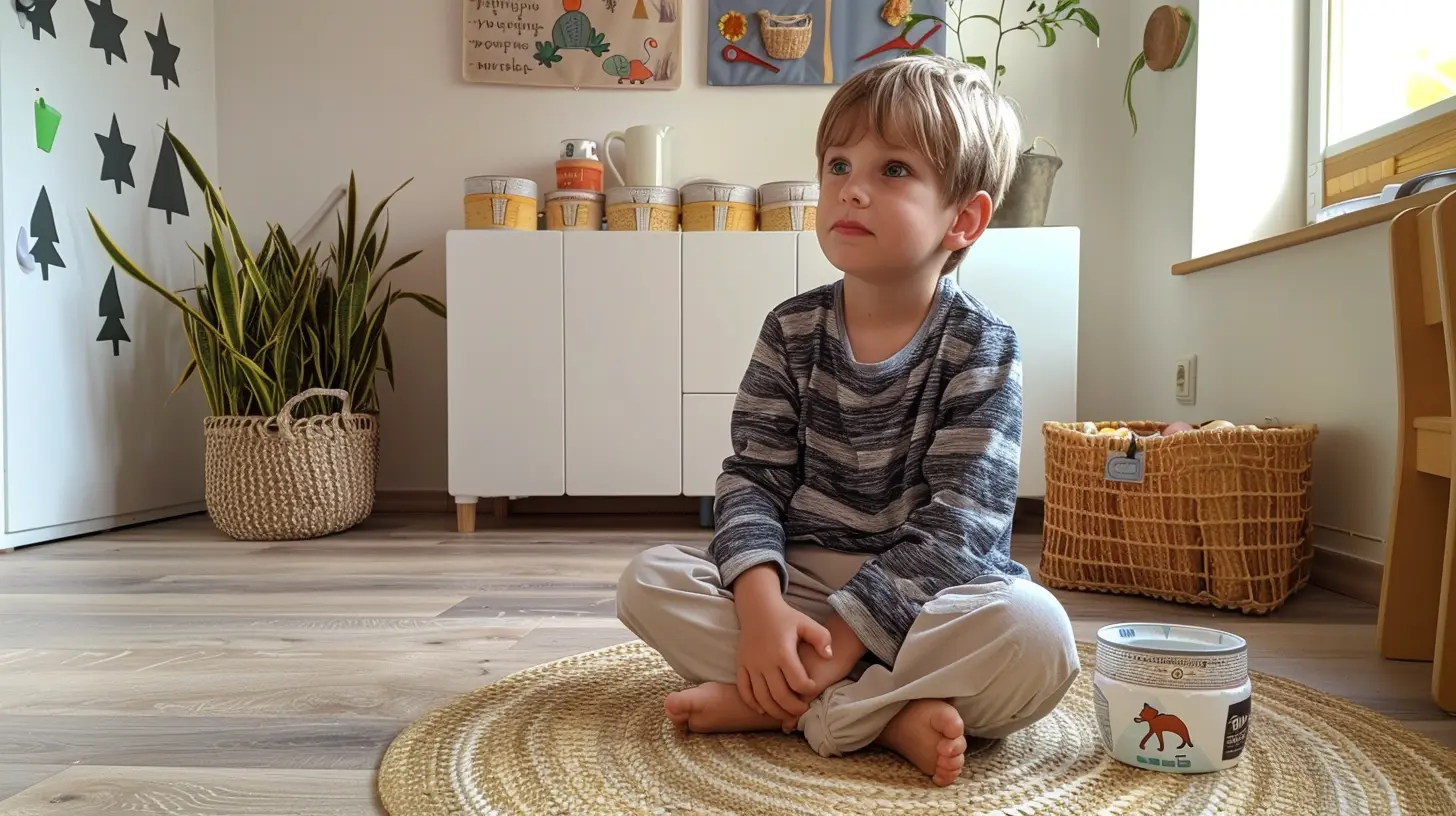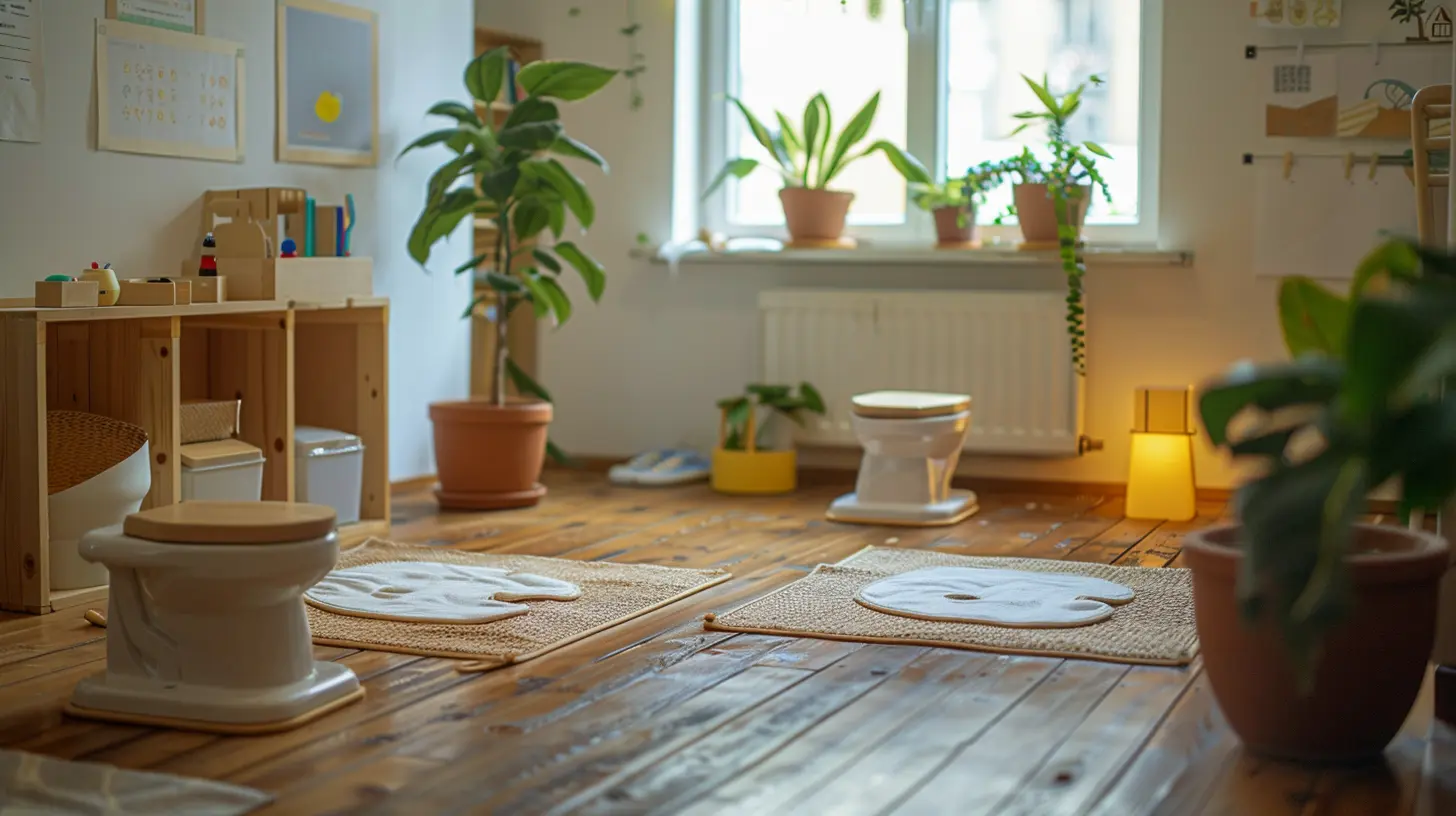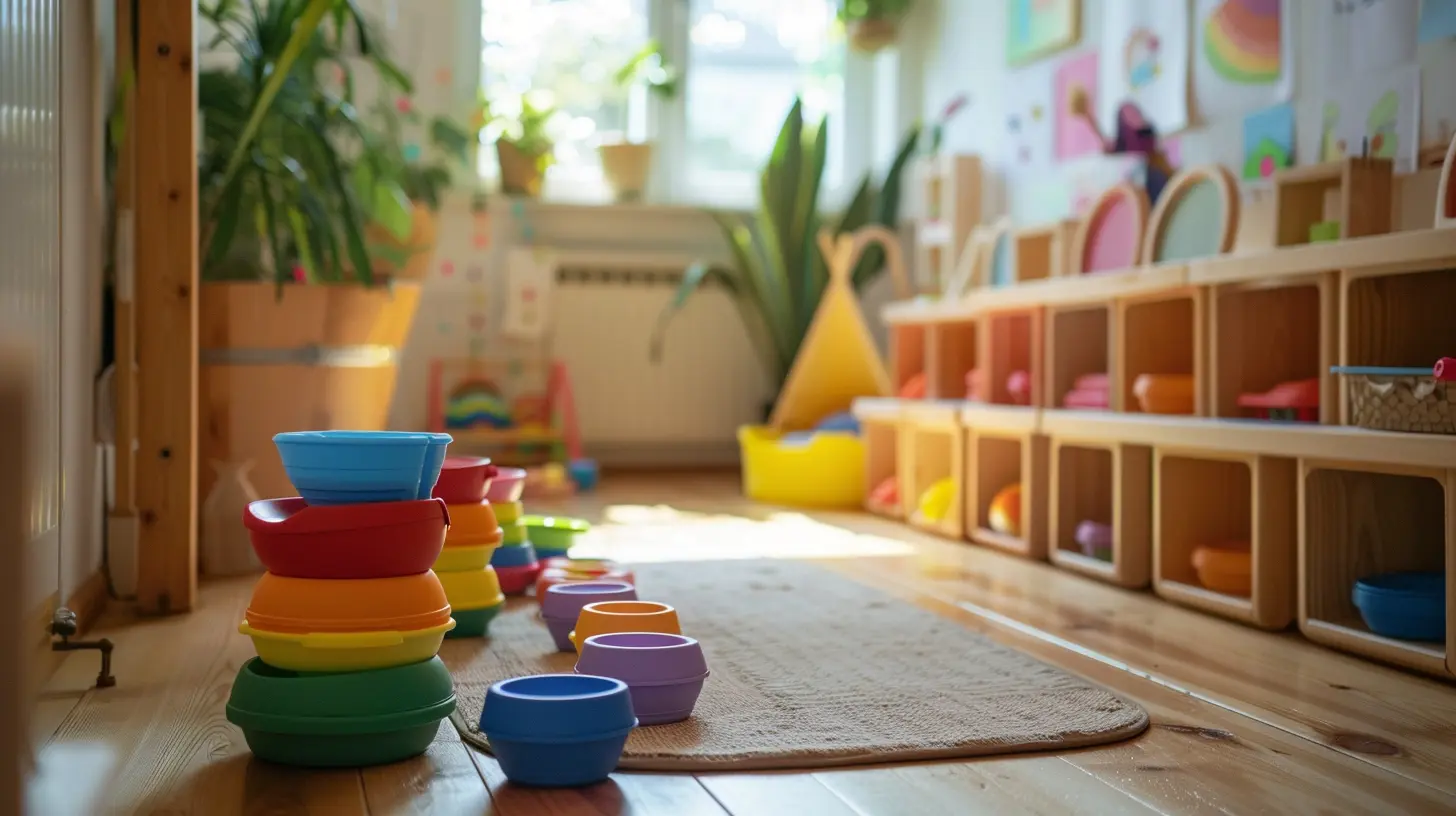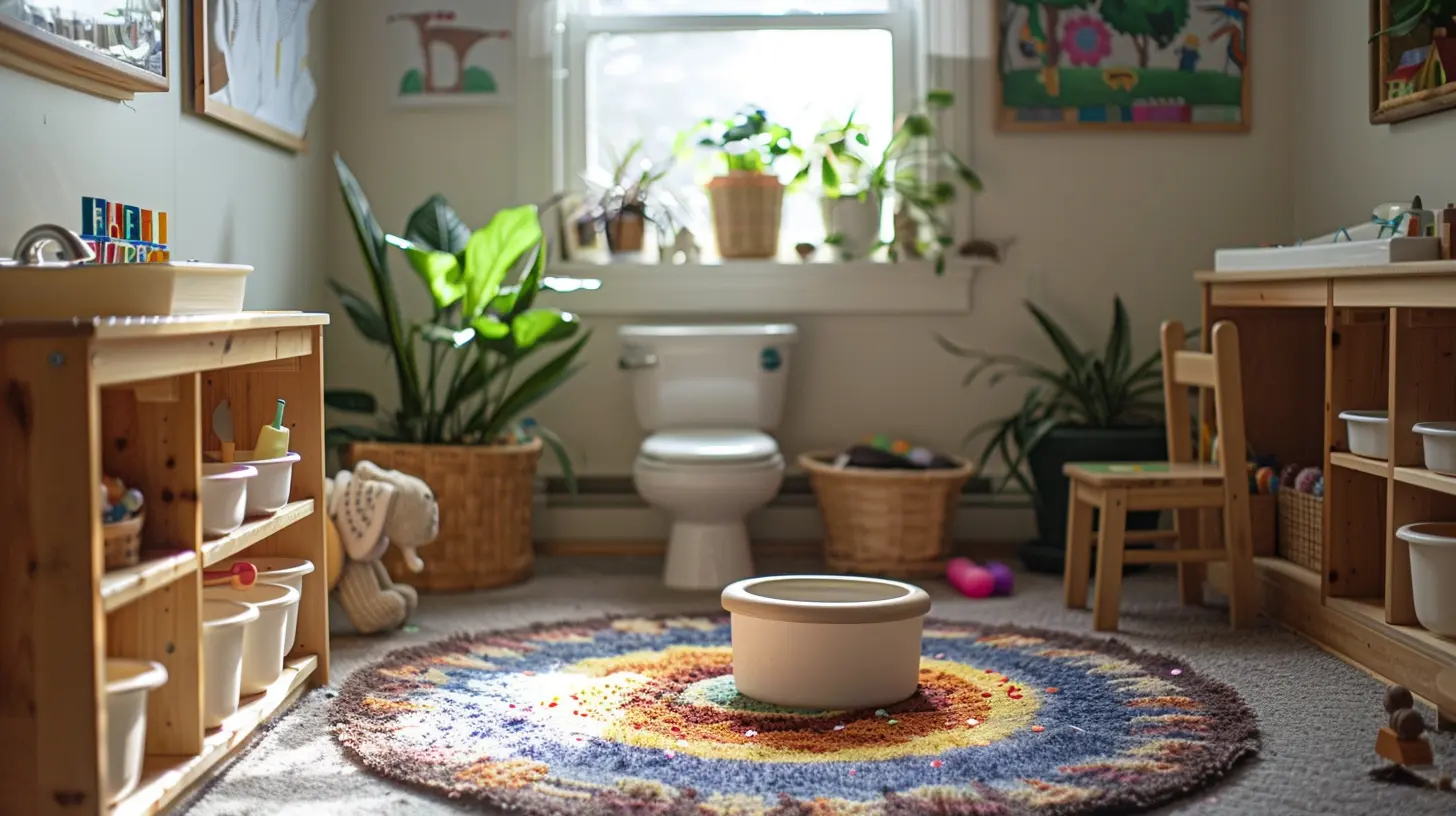Potty Training in a Montessori Home: Independence and Freedom
27 October 2025
Ah, potty training. Just saying the words can trigger a flood of emotions—excitement, anxiety, confusion, maybe even a little dread. We've all heard tales of battles fought in bathrooms and sticker charts that backfired. But what if we told you that potty training doesn’t have to be a power struggle? That it could actually be a beautiful journey toward independence and confidence for your child?
Welcome to potty training the Montessori way—where the focus is less about control and more about freedom, respect, and trust in your child’s innate abilities.

What Is Montessori, Anyway?
Before we dive into the diaper ditching details, let’s take a quick step back. If you’re new to the Montessori philosophy, it’s all about nurturing a child’s independence, allowing them to learn naturally through exploration, and respecting their developmental pace.Maria Montessori, the founder of this approach, believed in giving children access to real, hands-on experiences—even when it comes to something as messy and personal as potty training.
And trust us, once you see the connection between independence and potty learning, it all just clicks.

The Difference Between Potty Training and Potty Learning
Here’s something that might surprise you: in a Montessori home, we don’t really say “potty training.” Instead, many parents and educators opt for potty learning. Why the switch?Because we’re not teaching children to use the toilet like you’d train a puppy. We’re supporting their natural development. Potty learning is a process led by the child, not dictated by adults.
It’s a subtle shift in language but a powerful change in mindset.

When to Start Potty Learning
You know your child best—but generally, Montessori potty learning begins earlier than traditional toilet training. In many Montessori environments, the process can start as early as 12–18 months, long before the so-called “terrible twos.”At this age, children are naturally curious, eager to imitate adults, and more aware of their body’s signals. They’re also typically not in that fiercely independent (read: stubborn!) phase yet, which can make the journey smoother.
Signs Your Child Might Be Ready:
- Staying dry for longer periods (2+ hours)- Showing interest in what you’re doing in the bathroom
- Hiding to poop or showing discomfort with a wet or dirty diaper
- Pulling at diapers or wanting to try underwear
- Understanding and responding to simple instructions
- Being able to sit independently
Readiness doesn’t mean perfection. It’s just about creating the right environment and giving your child room to grow at their own pace.

Setting Up a Montessori-Inspired Potty Space
When we say "environment" in Montessori, we mean everything your child interacts with. For potty learning, the space matters just as much as the method.Here’s how to set up a space that promotes autonomy:
1. Keep It Accessible
Use a child-sized potty chair that allows your toddler to sit with both feet flat on the floor. This gives them stability, comfort, and a sense of control.If you're using a modified adult toilet, add a sturdy step stool and a smaller seat insert. Make sure they can get on and off independently.
2. Make It Predictable
Set up a consistent potty routine. Offer bathroom time when they wake up, before naps, and after meals. You're not forcing—they have the right to say no—you’re just making it part of the rhythm of their day.3. Prepare the Environment
Have a small shelf or basket nearby with:- Extra underwear and pants
- Wipes or a damp cloth
- A place for soiled clothes
- A book or small toy for encouragement
Everything should be within their reach. This lets your child take ownership of the process, from wiping to pulling up their own pants.
Ditching Diapers with Dignity
Going diaper-free can feel like a leap of faith, but in a Montessori home, it’s about trust. Trust in your child's abilities. Trust in the process. And yes—trust that accidents are a step in the right direction.Here’s how to transition gently:
1. Start with Cloth Training Pants
Cloth training underwear allows your child to feel wetness, which builds body awareness. This is essential for learning cause and effect.Yes, there will be puddles. But that’s okay. Each accident is a learning opportunity.
2. Avoid Bribes and Punishments
Skip the sticker charts and candy rewards. Praise the effort, not the outcome. Try phrases like:- “You listened to your body. That’s great!”
- “I saw you tried to get to the potty. Nice work!”
Encouragement should empower, not manipulate.
3. Stay Calm During Accidents
Accidents? Oh, they’re part of the package. Your best move? Stay cool. Reacting with frustration only creates shame—a big no-no in Montessori philosophy.Instead, try: “Let’s clean it up together.”
This gives your child responsibility without punishment.
Freedom Within Limits
One of the core tenets of Montessori is "freedom within limits." In potty learning, this means giving your child choices—within a framework.Let them choose which training pants to wear. Let them decide whether to use the big potty or the little one. But the expectation that we use the bathroom, not the floor, remains consistent.
Offer Choices Like:
- “Do you want to use the potty before or after your snack?”- “Do you want to try the bathroom in two minutes or five?”
This empowers them without overwhelming them.
Nighttime Potty Learning
Night dryness usually follows daytime skills—sometimes by months or even years. That’s okay.If your child is waking up dry consistently, it could be time to ditch diapers at night. Use a waterproof mattress cover and keep extra pajamas handy just in case.
No pressure. No shame. Just support.
Common Challenges and Graceful Solutions
🚧 My child refuses to sit on the potty.
This happens! Don’t turn it into a battle. Simply say:“That’s okay. We’ll try again later.”
Keep the potty visible, and model the behavior yourself.
🚧 So. Many. Accidents.
Yep. That’s normal. Resist the urge to go back to diapers. Instead, offer gentle guidance:“You had an accident. Let’s clean it up together.”
Repeat with patience... and maybe invest in a good mop.
🚧 My toddler hides to poop.
This is actually a sign that they’re aware of the urge and seeking privacy. Consider placing a potty in a quieter area of the home—and respect their space.The Role of the Adult: Observe, Don’t Control
Think of yourself as a guide, not a taskmaster. Watch for signs your child is ready, but don’t rush the process. Offer help when needed, but resist doing everything for them.Yes, it might take longer than if you just did it yourself—but that’s kind of the point, right? This is their journey.
Montessori reminds us that every child has an inner teacher. Your job is to listen, observe, and provide an environment that supports their growth.
Final Thoughts: Trust the Child, Trust the Process
Potty training—oops, potty learning—in a Montessori home isn’t just about saying goodbye to diapers. It’s about saying hello to a more independent, confident, and self-aware child.It takes patience. It takes trust. And yes, it takes a good sense of humor.
But when you see your little one proudly put on their own underwear or rush to the potty with that spark of excitement in their eyes? Totally worth it.
So take a deep breath, roll up your sleeves, and embrace the journey. You’ve got this—and so does your kiddo.
all images in this post were generated using AI tools
Category:
Potty TrainingAuthor:

Maya Underwood
Discussion
rate this article
1 comments
Haze Maddox
This article beautifully highlights the Montessori approach to potty training, emphasizing independence and freedom. It's essential for fostering confidence in young children. Thank you for sharing such valuable insights for parents on this important milestone!
October 27, 2025 at 3:48 AM

Maya Underwood
Thank you for your kind words! I'm glad you found the insights on fostering independence and confidence in potty training valuable.


